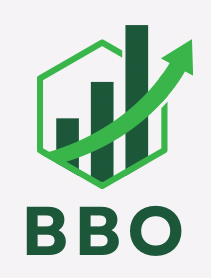
The internet has revolutionized entrepreneurship, providing unprecedented opportunities to start a business with minimal upfront costs and access to a global audience. However, before diving into any venture, the most crucial step is finding the right business idea—one that aligns with your passions, skills, market demand, and profitability. With thousands of potential niches, the task may seem overwhelming. Fortunately, with a strategic approach, you can uncover online business ideas that are both viable and fulfilling. Below, we’ll walk through a systematic process to help you find your next big idea for an online business.
Step 1: Understand the Online Business Landscape
Before searching for ideas, it’s essential to understand the different types of online businesses. There are numerous models, and each has its unique dynamics. Some of the most common types include:
- E-commerce: Selling physical or digital products through an online store.
- Service-based business: Offering services like consulting, coaching, design, or writing.
- Content creation: Building an audience and monetizing through ads, sponsorships, or subscriptions (e.g., blogs, YouTube channels, podcasts).
- Affiliate marketing: Promoting other people’s products and earning a commission for each sale made through your referral.
- Software as a Service (SaaS): Developing and selling subscription-based software applications.
- Dropshipping: Selling physical products without holding inventory; suppliers handle storage and fulfillment.
- Online courses and digital products: Creating and selling educational content, templates, or resources.
- Subscription services: Offering a recurring service or product, such as memberships or subscription boxes.
Understanding these options will help you focus your search on a model that best suits your strengths and interests.
Step 2: Identify Your Strengths and Passions
Starting a business requires dedication, hard work, and persistence. It’s essential to choose something that you’re passionate about and skilled at, as this will help sustain you through inevitable challenges. Consider your:
- Skills: What are you good at? This could be technical skills like programming, creative skills like graphic design, or soft skills like communication or leadership.
- Hobbies: What activities bring you joy? This might range from photography, gaming, or fitness to cooking or crafting.
- Past experiences: Have you worked in specific industries or roles that gave you unique insights? Leverage these experiences to build a business.
- Values: What causes or values are important to you? Whether it’s sustainability, education, or innovation, aligning your business with your values can fuel your motivation.
Write down a list of your strengths and passions. The intersection of these two areas often leads to the most rewarding and sustainable business ideas.
Step 3: Conduct Market Research
Once you have a sense of what you’d enjoy doing, it’s time to explore the market. Even the most innovative idea will fail if there’s no demand for it. Here’s how to ensure there’s a market for your business idea:
1. Find Problems That Need Solving
The best business ideas often stem from solving a problem or filling a gap in the market. Think about the problems people in your network or community face and how you could solve them. You can also:
- Browse forums and communities: Sites like Reddit, Quora, or specialized industry forums are great places to discover pain points or questions people have.
- Social media listening: Monitor social media platforms to identify trends and challenges within specific niches.
- Read reviews: Look at Amazon, Yelp, or other review platforms to understand what people like or dislike about existing products or services.
2. Check Market Demand
You’ll want to ensure there’s a demand for your business idea. Some helpful methods for assessing market demand include:
- Google Trends: This tool allows you to see how often specific keywords are searched over time, helping you assess if a topic is gaining or losing popularity.
- Keyword Research Tools: Tools like Ahrefs, Ubersuggest, or Google Keyword Planner can show how many people are searching for terms related to your potential business idea.
- Social Media Polls: Use platforms like Instagram or Twitter to poll your audience on whether they’d be interested in a certain product or service.
- Test with an MVP: If you have a rough business idea, test it with a minimal viable product (MVP). Create a simple version of your offering and see if people are willing to pay for it.
3. Evaluate the Competition
Competition is not necessarily a bad thing—it indicates that there’s a market for your idea. However, it’s important to analyze competitors to understand what they’re doing well and where there’s room for improvement. You can:
- Study their websites and social media: Analyze the content and structure of competitors’ websites, paying attention to their value propositions and customer engagement strategies.
- Look at customer reviews: Identify what customers love and where competitors fall short. This will help you pinpoint opportunities for differentiation.
- Evaluate their SEO: Use SEO tools to see what keywords competitors are ranking for, which can help guide your marketing strategy.
- Check pricing models: Compare the pricing strategies of competitors to assess whether your idea can offer better value.
Step 4: Explore Emerging Trends and Industries
Keeping an eye on industry trends is an excellent way to find untapped business opportunities. Fast-growing industries often offer more opportunities for new entrants. Here are some sectors to consider:
1. Sustainability and Green Businesses
With increasing awareness around climate change and environmental issues, consumers are more inclined to support businesses with eco-friendly products or practices. Whether it’s sustainable fashion, zero-waste products, or renewable energy solutions, this market has immense potential.
2. Remote Work and Digital Tools
The rise of remote work has spurred demand for productivity tools, communication platforms, and digital workspaces. Consider building tools, services, or educational content that help people and businesses thrive in a remote-first world.
3. Health and Wellness
The health and wellness industry continues to grow as people prioritize their physical and mental well-being. Potential business ideas could include online fitness coaching, mental health apps, wellness products, or nutrition consultations.
4. Education and Online Learning
E-learning platforms are booming as people seek to learn new skills online. You could create courses, tutorials, or membership-based educational platforms focused on areas like coding, marketing, personal development, or creative skills.
5. Subscription Services
From meal kits and fitness programs to digital content and niche products, subscription models have gained massive popularity. Offering a recurring service can create a predictable revenue stream and foster customer loyalty.
6. NFTs and Blockchain Technology
Though still in its early stages, blockchain technology, including non-fungible tokens (NFTs), offers innovative possibilities for digital art, virtual goods, decentralized finance, and more. If you’re tech-savvy and interested in emerging technologies, this could be a niche worth exploring.
Step 5: Brainstorm Online Business Ideas
Now that you’ve analyzed your strengths, passions, market trends, and competition, it’s time to brainstorm business ideas. Here are some online business ideas based on the key areas we’ve discussed:
1. E-commerce and Dropshipping
- Niche product stores: Focus on a specific type of product that appeals to a defined audience, such as eco-friendly household items or handmade jewelry.
- Print-on-demand products: Design custom apparel or accessories that can be printed and shipped on demand through services like Printful or Redbubble.
- Subscription boxes: Curate and deliver specialty items, such as skincare products, gourmet snacks, or hobby-related tools, to customers on a recurring basis.
2. Service-Based Businesses
- Freelance writing or copywriting: Offer writing services to businesses in need of website content, marketing materials, or blog posts.
- Graphic design or web design: Help companies or entrepreneurs with branding, website design, or social media graphics.
- Social media management: Manage and grow social media accounts for businesses looking to build an online presence.
- Virtual assistant services: Provide administrative support, such as email management, scheduling, and customer service, for busy professionals.
3. Content Creation and Education
- Blogging: Start a blog around a niche topic you’re passionate about, such as travel, finance, or lifestyle, and monetize through ads, affiliate marketing, or sponsored posts.
- YouTube channel or podcast: Create video or audio content on a specific topic, building an audience and monetizing through ads, sponsorships, or Patreon.
- Online courses: Teach a specific skill, such as photography, graphic design, or digital marketing, through platforms like Udemy or Teachable.
- Membership site: Offer premium content, such as expert advice, training materials, or exclusive resources, behind a subscription paywall.
4. Affiliate Marketing
- Niche affiliate websites: Build a blog or website around a specific interest (e.g., fitness equipment reviews, tech gadgets, or personal finance) and promote related products for a commission.
- Product review or comparison sites: Help people make informed buying decisions by reviewing and comparing products within a niche market.
5. Software and App Development
- Create SaaS tools: Develop software that solves a specific problem for businesses, such as project management tools, time-tracking apps, or customer relationship management (CRM) systems.
- Mobile app development: If you have coding skills, build mobile apps that address pain points or enhance convenience in everyday life, such as health tracking apps, budgeting tools, or language learning programs.
Step 6: Validate Your Business Idea
Before fully committing to a
business idea, you’ll want to validate it. This means testing whether there’s a genuine demand for your product or service and whether people are willing to pay for it. Here are some validation methods:
- Create a landing page: Build a simple landing page that explains your business idea and includes a call to action, such as signing up for a newsletter or joining a waitlist.
- Presell your product or service: Offer preorders or early access to your product to gauge interest. If people are willing to pay upfront, it’s a good sign that your idea has potential.
- Run small ad campaigns: Use platforms like Google Ads or Facebook Ads to drive traffic to your landing page and see if people are interested.
- Ask for feedback: Reach out to your target audience through surveys or interviews to get their thoughts on your idea.
Conclusion
Finding the right online business idea takes time, research, and self-awareness. By assessing your skills, passions, market demand, and competition, you can narrow down options and identify viable opportunities. Remember that the key to a successful business is solving a real problem or meeting a genuine need. Once you find an idea that excites you and serves a clear market demand, validate it and start building your business incrementally. The digital landscape is vast, and with the right approach, you can carve out a profitable and fulfilling niche for yourself.

